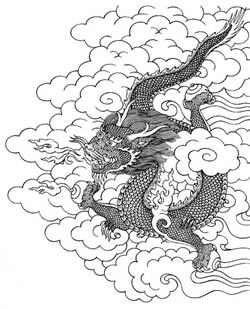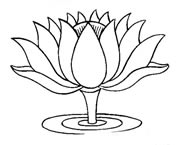buddhism + ecology
Of course today every religion is desperately flagging up its green credentials; just like every trans-national corporation is suddenly a friend of the earth. Clearly, that is not enough. All religious traditions, including Buddhism, are liable to fall into life denying traps: succumbing to anthropocentric prejudices; fetishizing the spiritual and remaining confused by residual beliefs in an otherworldly salvation, a somewhere else nirvana; failures to resolve the split between the spiritual and the material, between mind and body, humanity and nature. But even a critical and cautious awareness reveals a wealth of inspiration and vision within the Buddhist tradition that supports an ecological awareness.
Many of those involved in the ecology movement have found inspiration and valuable parallels within the Buddhist tradition, and many Buddhists themselves have begun to draw out the ecological implications of their tradition. The fundamental Buddhist teachings around interconnectedness, non-violence, and conditionality all contribute to both a practice and understanding that augments and honours the ecological paradigms now arising.
The Buddhist scholar Donald Swearer writes:
“Many Buddhist practitioners have found in one of the central ideas of Buddhism – the principle of interdependence – an ecological vision that integrates all aspects of the ecosphere—particular individuals and general species—in terms of the principle of mutual co-dependence. Within this cosmological model individual entities are by their very nature relational, thereby undermining the autonomous self over against the “other” be it human, animal, or vegetable.”
The Dharma, as Buddhist’s refer to the Buddhist teachings, states that all things are interconnected. There is nothing in existence which exists as a separate, fixed, isolated entity. Things only exist in relationship and connection with other things. In fact so much so that the boundaries between things are only useful conventions, provisionally true, but by no means absolute.
 This view is also found at the heart of the ecological perspective, particularly as influenced by systems theory, which recognises that everything in this world is woven into a subtle and intricate web of relationships.
This view is also found at the heart of the ecological perspective, particularly as influenced by systems theory, which recognises that everything in this world is woven into a subtle and intricate web of relationships.
This idea of the interconnectedness of all things finds its fullest expression in the Hua-yen Schools of Chinese Buddhism. In the Avatamsaka Sutra, an important Buddhist text central to Hua-yen School, we find a symbolic representation of reality in the image of Indra’s Net. Imagine stretching out into infinite space, in every direction, a network of golden threads. A three-dimensional net filling the whole of space. At the juncture of every thread is a sparkling, iridescent, multifaceted jewel. Now imagine we take a closer look at one of these infinite jewels. Looking closely we see that in each facet of the jewel there is a reflection of each and every other jewel in the infinite network… as the play of light sparkles and glimmers in one jewel so that slight change is reflected in each and every other jewel, and that change in each jewel is reflected again throughout the entirety of space.
Although presented in mythic cosmic terms, this image of Indra’s net, it is not an image of some far off cosmic sphere, but a symbol for the world we live in moment by moment. It is an attempt to convey the realisation that all phenomenon, all things, all beings, are intimately related to each other, intimately interconnected. We are profoundly connected in a web of life and complex social relationships stretching across the globe.
We know that mankind has failed to take account of the intimate connections within the ecosystem, between himself and the world, arrogantly charging in with newfound technological powers, destabilising intricate systems of ecological organisation, the complexity of which we are only just beginning to realise. We know that subtle strands of influence link our shopping habits and the economies of the developing world; that the chemicals we use in our homes and industries have a pervasive effect throughout the oceans and the skies; that our relative affluence and luxury are inextricably bound up with the poverty and toil of others.
If we are to exist in a way which no longer perpetuates the damage done so far, and begins to heal some of the ecological and social wounds we have created, we must appreciate more and more our own interconnectedness and the intimate relations which exist between things in the world around us.
 Many Buddhist see their worldview as a rejection of hierarchical dominance of one human over another or humans over nature, and as the basis of an ethic of empathetic compassion which respects of biodiversity and social justice. The Thai monk, Buddhadasa Bhikkhu, “The entire cosmos is a cooperative. The sun, the moon, and the stars live together as a cooperative. The same is true for humans and animals, trees, and the earth. When we realize that the world is a mutual, interdependent, cooperative enterprise… then we can build a noble environment. If our lives are not based on this truth, then we shall perish.”
Many Buddhist see their worldview as a rejection of hierarchical dominance of one human over another or humans over nature, and as the basis of an ethic of empathetic compassion which respects of biodiversity and social justice. The Thai monk, Buddhadasa Bhikkhu, “The entire cosmos is a cooperative. The sun, the moon, and the stars live together as a cooperative. The same is true for humans and animals, trees, and the earth. When we realize that the world is a mutual, interdependent, cooperative enterprise… then we can build a noble environment. If our lives are not based on this truth, then we shall perish.”
While compassion may follow from an understanding of all life-forms as mutually interdependent, a mere cognitive recognition of interdependence is not enough for an ecological ethic. Buddhists also emphasise the need for training and practice in terms of the threefold path of ethics, meditation, and wisdom in order to give rise to a just and sustainable world.
It has been argued that Buddhism serves primarily a salvational or soteriological purpose and that the attempt to ecologise the tradition distorts the historical and philosophical record. But Buddhists influenced by an ecological perspective point to the bodhisattva ideal, which teaches that the highest goals of Buddhism are not personal salvation but challenge us to embody compassionate awareness and dedicate ourselves to the welfare of all beings from whom we are not essentially separate.
Socially engaged Buddhists have realised that in order to be a force for social transformation the traditional Buddhist emphasis on individual moral and spiritual transformation must be augmented to address more directly the structures of oppression, exploitation, and environmental degradation. They recognise that the traits of greed, hatred, and ignorance, which Buddhism identifies as the root cause of suffering in the individual, also need to be challenged where they are found embodied in systemic and institutionalised forms. While adhering to the Buddhist emphasis on the practice of mindful awareness and a lifestyle of simplicity, Buddhist activists are applying their critique and practice to specific social and ecological issues.
Such an approach is found in the networks of engaged Buddhists such as the International Network of Engaged Buddhists, the Network of Engaged Buddhists (UK), and the Buddhist Peace Fellowship, and championed by individuals such as the Dalai Lama, Thich Nhat Hanh, Ken Jones, Sulak Sivaraksa, A.T.Ariyaratna, Joanna Macy, and Kenneth Kraft.
The application of Buddhist insights to our current ecological and social ills constitutes one of Buddhisms most creative and dynamic responses to the contemporary context.
For more see:
Network of Engaged Buddhists UK
International Network of Engaged Buddhists
Religion of the Market by David Loy
Buddhism and Ecology by Donald Swearer
The Buddhist Conception of an Ecological Self by Alan Sponberg
